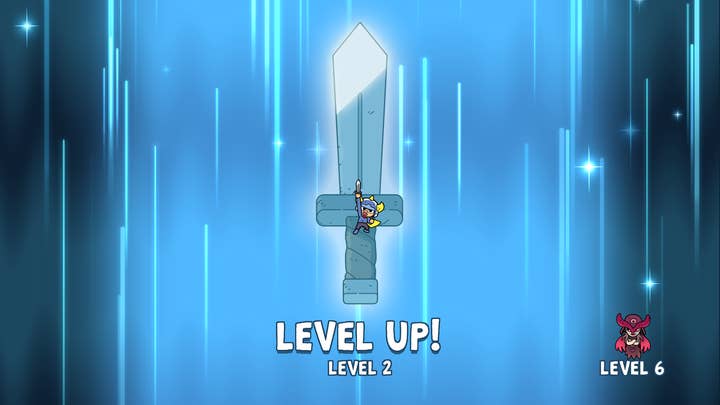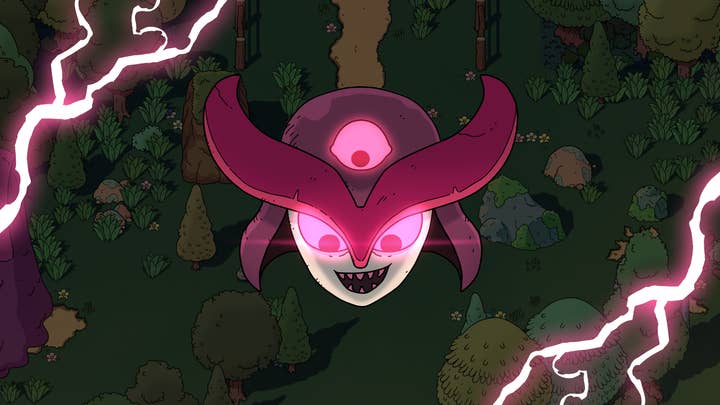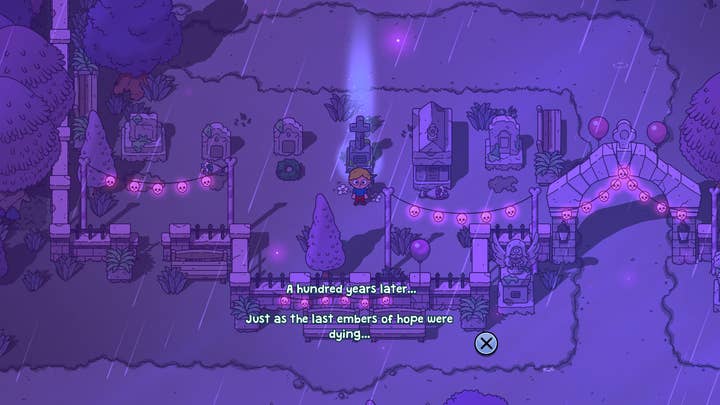The Swords of Ditto and the race against time
Onebitbeyond's Jonathan Biddle on the value of listening to your audience, and making fundamental changes after launch
Post-launch content is now typical for games of all sizes and budgets, but that content generally takes the form of new maps, new characters, more cosmetic items, or extra story-lines. Post-launch content is rarely a revamp of a game's entire structure, and when that happens, it usually means something wasn't quite working.
That was the case for Onebitbeyond's The Swords of Ditto, which launched back in April as a top-down, 2D adventure reminiscent of The Legend of Zelda. The main character is a child hero who must prevent the antagonist, Mormo, from coming into power and plunging the land into darkness. The child hero does so by delving into dungeons, acquiring powerful gadgets, and levelling up ahead of the final confrontation with Mormo.
Despite how familiar this story sounds, the difference in Swords of Ditto is that, if the hero dies, it's effectively "game over" for that particular hero. Mormo wins, and dominates the world for another 100 years before a new hero is reborn to try again.
"I wanted to take those skills and combine them together: directing Nintendo games, and...2D level design"
Jonathan Biddle, the founder of Onebitbeyond and game director on The Swords of Ditto, was an experienced programmer and designer when he began work on the studio's first game. He co-founded Curve Digital back in 2005 after years at Criterion, during which time the Curve team worked its way up from low-tech joystick games to partnering with Nintendo on games like Fluidity for WiiWare and, later, Stealth Inc. Biddle left when the studio became almost exclusively a publisher, to continue his focus on development.
"I wanted to take something that would use the design we learned with Nintendo and the skills I'd learned making Stealth Inc," Biddle says. "I programmed the original Stealth Bastard [which became Stealth Inc] in Game Maker. I was really fast, and I did the sequel on my own in about four months and then it got reprogrammed into a console version.
"I wanted to take those skills and combine them together: directing Nintendo games, and the skills that our team had. We'd done a lot of 2D level design, so it was about focusing on what we'd learned and trying to make something interesting with that.

"We made Stealth Inc 2, and with it we made lots of interesting tools and gadgets, which are similar to the things you might have in Zelda. While we were making those, the way we were exploiting the mechanics and some of the things they could do, we wanted to do something like that, but with a Zelda [type] game. It inspired us to do more in that direction."
What was both curious and frantic about Swords of Ditto when it launched was its time limit. Once the tutorial was done, the player had effectively five "days" to prepare themselves to fight Mormo, which included trying to find dungeons, upgrades and gadgets across a hidden map with procedurally generated pathways. Although there were mechanisms to extend that time period hidden within the game, they required careful searching and planning to activate. For several months after launch, those playing Swords of Ditto were forced to approach it more like a timed roguelike than an ever-changing dungeon crawler.
"Part of our strategy as a small team was to make the most of the work we'd done by not letting people get through it in one go," Biddle says. "It's presented to the player and it changes every time, and it means we can take the things we make and make more of them, make them last longer.
"I wasn't confident. There was no place I could go to look at examples where someone had already done this"
"The idea was to make it like a micro-RPG. It's all about constraints, and playing to our strengths. We knew we could make a short RPG, but not a big one, so we wanted to make a short RPG that was different every time... We wanted one where you couldn't see everything every time you played. So this is where the idea that whatever you did in one story affected what happened in the next story came from. It was almost like you were playing the sequel to the previous story."
Because of the multitude of elements at play in Swords of Ditto - roguelike repetition, Zelda-style gadgets and dungeons, a time limit - Biddle wasn't very confident going into the game's release. In fact, something about the game bothered him right up to launch, but he wasn't able to pin it down in time.
Onebitbeyond is a small indie studio, with maybe six people at its biggest. Biddle wasn't able to hire many playtesters, nor did he plan to release the game in Early Access, so it was with a great deal of apprehension that The Swords of Ditto finally launched.
"I wasn't confident," he says. "There was no place I could go to look at examples where someone had already done this. I put it out to a lot of trusted friends, and the feedback I was getting was mixed. Some people really enjoyed it, and some people couldn't understand it, so I knew that it wasn't quite right. There were certain themes appearing, but generally the way people were responding was on the whole positive."

Despite his concerns that The Swords of Ditto wasn't what it should be, Biddle felt whatever shortcomings it had were things that could be changed. Onebitbeyond resolved to set aside the time post-launch to tackle those shortcomings once they manifested more clearly.
"There's a difference, when you're developing a game, between putting it out to five or six friends and putting it out to thousands of people and getting their feedback," Biddle says. "The experience as a designer is radically different, and themes appear of things people aren't understanding, things that people are clashing with or finding difficult or punishing. I guess I really wanted to be flexible with how people responded to what we created.
"I didn't feel that I had a point where I was like, 'This is what it has to be.' I was very open to, 'What can this be? How are people going to appreciate this, and what's going to make it better for them?' The idea was always to put a stick in the sand and say, 'This is where we're going to start' and see what people think about it, and if there are changes required, make those changes, update and improve it."
"The game was always looking after you, and it always had these systems ready for you, but people didn't understand that"
Biddle's instincts were correct. The Swords of Ditto launched to mixed reviews. Generally, people enjoyed the premise and mechanics, but one issue that came up repeatedly was the way the time limit made players feel. Not, Biddle was careful to point out, how it actually functioned in the grand scheme of the game, but the sense of panic it instilled in people who took it seriously, where the game did not instruct them otherwise.
"We spent a good time as a team sitting around and discussing what we'd seen people say, look for any common themes of discussion, all the criticism, good and bad, just to see what people did like," he says. "It's never completely consistent. Some people really enjoyed the time limit. The thing with the time limit is it's always able to be overcome, but we give the player systems that allow them to control time.
"It's about the perception of what that time limit is... The game was always looking after you, and it always had these systems ready for you, but people didn't understand that. I wanted to keep the limit in place, so people couldn't see everything at once without learning the game's systems, but take that element of feeling rushed away."
And so, for the next few months, Biddle focused his energy on listening to player feedback and "fixing" the game, while the rest of the team worked on a more substantial update for later in the year.

"Being such a small team, what we've done since we started is split into two groups even though there's only four or five of us," Biddle said. "For the first couple of months I looked at these changes on my own, while the others worked on a much more substantial update with new areas, new gadgets. They started concepting and producing assets for that, and that's going to come much later in the year. I was able to just spend my time putting these changes in.
"Because I'm a designer-programmer, I would just sit with it on my own and change things until it worked. I imagine that's a lot harder for a full-sized studio to do. We'd always committed to doing it, but unless you have that space in your schedule I think that'd be difficult to react to quickly. We put two updates out within two months."
"That's always been the case with every game I've ever released. You always run out of time"
And then, three months later, The Swords of Ditto received two major updates, back to back. With those updates came a number of significant changes to the structure of the game, including an entirely new system to help fresh characters seem less like a punishment, the removal of the time limit from the majority of the game, adjustments to maps and dungeons to change how the player encounters and enters them, and more besides. Biddle says the changes were intended to dramatically change the perspective and feel of the game for players, but from his side, they mostly brought the game in line with the way it had been structured under the hood all along.
"I felt the first release was 1.0, but it was always going to evolve over time and we were committed to improving it over months," he says. "We're working on new stuff now. That was always part of the plan, because it is so different in lots of respects to other games. I had to take that reactive position.
"There was always something nagging me about the time limit. We tried it and implemented it, but by the time launch was on there wasn't a way to properly react and change it in a way that we intended it to work. With any kind of game system, it's difficult to predict exactly what the fallout is going to be in terms of player psychology."
Despite Biddle's lengthy résumé headed into The Swords of Ditto, the strange way the game progressed to become what it is now proved an interesting lesson for Onebitbeyond - one Biddle intends to act upon more decisively in future titles.
"I'd love a bit more time at the end with a game in a more finished state in order to react to it before releasing," he says. "But that's always been the case with every game I've ever released. You always run out of time, it's just inevitable. As a creator, trying to make it as good as possible, you'll just keep changing.
"In the future, I'd like to put more of a hard line in place for myself and say, 'After this, just put it out as a beta test, then act on the feedback.' It would have been nice to put out what we had as the Timeless Update on launch day, but we just didn't have the information that we had after release. It's about leap-frogging that and getting to that position before release next time."
